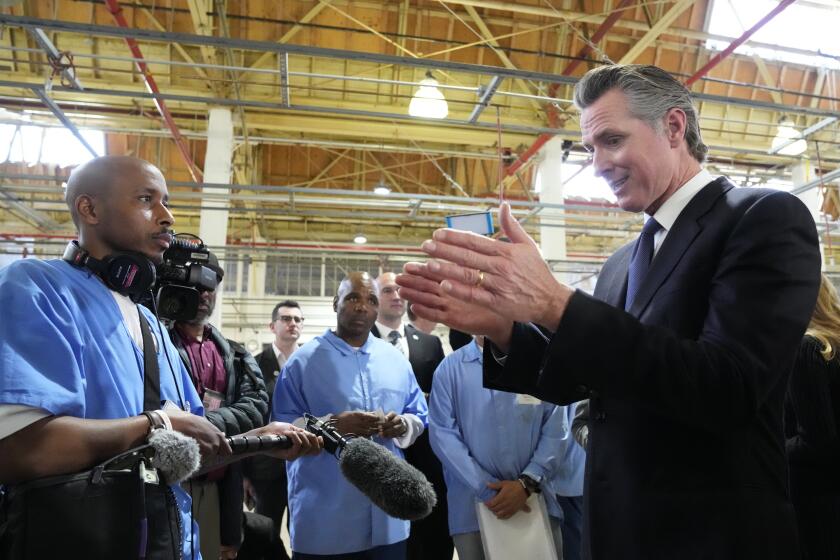Afghanistan chopper downing raises concerns over U.S.
- Share via
Reporting from Kabul, Afghanistan — The downing of an American helicopter full of elite troops deepened concerns among some Afghans that it might symbolize an erosion of U.S. power at an uncertain crossroads in the nearly 10-year-old war.
In the rugged district of Wardak province where the U.S. Chinook helicopter crashed early Saturday, apparently after being struck by a rocket-propelled grenade, NATO and Afghan forces engaged in daylong skirmishes with suspected Taliban fighters, according to Afghan officials.
Wardak Police Chief Abdul Qayuum Baqizoi said there had been Taliban casualties in Sunday’s fighting, but he did not know how many. Western military officials said only that the area was being secured.
The Taliban claimed responsibility for downing the helicopter within hours of the crash. Following confirmation from U.S. officials that the 30 American troops killed had included 22 members of the Navy SEALs, the Islamic movement reacted with jubilation.
“We killed America’s most elite forces; we achieved one of our biggest goals,” Taliban spokesman Zabiullah Mujahid said Sunday in a telephone interview. “This shows that our efforts are unstoppable.”
In the Muslim holy month of Ramadan, each night’s iftar, or breaking of the fast, is an opportunity for lengthy discussion and debate. At family and tribal gatherings, the helicopter downing and its ramifications were a dominant topic over plates of steaming meat and rice.
The disclosure that some of the SEALs were members of the same unit that carried out the raid that killed Osama bin Laden this year prompted some Afghans, particularly the religiously conservative, to view the event as divine retribution.
“It’s obvious that God is on the side of Muslims, and God punished them for what they had done,” said a 25-year-old mosque preacher in Kabul named Habiullah, who uses only one name. “This shows America’s weakness versus the Taliban.”
Others scoffed at that notion, saying it did not reflect some newfound omnipotence on the part of the Taliban.
“It’s a war, and both sides take casualties,” said Mohammed Arif, a 28-year-old Kabul man in casual Western-style dress. “Sometimes these things are just a coincidence.”
The Taliban and other insurgent groups have had some success in infiltrating the Afghan defense establishment, and some aspects of the helicopter downing raised questions about whether the insurgents might have had some inside knowledge of the raid in Wardak’s Sayedabad district, jointly carried out with an Afghan commando force.
Some published reports said the SEALs had come to the aid of a unit of U.S. Army Rangers that was under fire from insurgents.
In their claim of responsibility, the Taliban quickly specified the number of troops aboard the downed CH-47. Mujahid, the Taliban spokesman, insisted that insurgent fighters had been lying in wait for the Western troops.
“We were prepared, and we are fully ready to deal them more such blows,” Mujahid said.
Even before Saturday’s deaths, many Afghans had expressed nervousness over the prospect of the Western combat mission ending, with the Afghan police and army scheduled to take over security in the next three years. Some Afghans do not believe that their own forces are up to the task.
The helicopter’s downing also served as a subtle reminder of tensions between the Western military and President Hamid Karzai, who caused consternation among some U.S. officials Saturday when he prematurely revealed, in what was ostensibly a statement of condolence, that members of the special forces had been aboard the downed chopper.
The incident also raised troubling new questions about the insurgents’ ability to shoot down helicopters, upon which the NATO force relies heavily for moving troops and cargo. Large, lumbering craft like the twin-rotor Chinooks are particularly vulnerable to attack; another was brought down by hostile fire less than two weeks earlier in Kunar province in eastern Afghanistan, but no one was killed.
On Sunday, the NATO force announced the deaths of four more service members, two in the south and two in the east. The French government later identified the two troops who died in the east as French, killed in another volatile province close to the capital.
Saturday’s deadly episode also cast a spotlight on Wardak’s Tangi Valley, where the crash occurred. It is a longtime trouble spot from which American forces pulled back several months ago. With the transition to Afghan security control underway in several parts of the country, there are fears that the Taliban and its allies will move to exploit any gaps in the presence of Western troops.
In Wardak, which adjoins Kabul province, Afghan officials said the Taliban and its allies in the Haqqani network do not need to hold territory in order to pose a threat.
“The Taliban don’t have the ability to fight the NATO troops face to face,” said Baqizoi, the Wardak police chief. “They can just run away, and come back again.”
Special correspondent Aimal Yaqubi contributed to this report.
More to Read
Sign up for Essential California
The most important California stories and recommendations in your inbox every morning.
You may occasionally receive promotional content from the Los Angeles Times.













